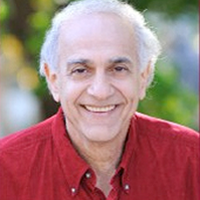 Dr. Steve Shama
Dr. Steve Shama
Keynote Speaker
Air Date, June 1, 2014
Dr. Steve Shama holds a Bachelor of Arts (AB) degree from Columbia College, a Medical Degree (MD) from Temple University School of Medicine and a Masters Degree in Public Health (MPH) from the Harvard School of Public Health.
He spent the early part of his career working with the National Institute For Occupational Safety and Health (NIOSH) and for the National Institutes of Health (NIH), traveling the country performing hazard evaluations in industry and conducting medical research. After completing his MPH in 1974, Steve completed his dermatology residency at Harvard Medical School Department of Dermatology in Boston. He also did a fellowship at St. John’s Hospital for Diseases of the Skin in London, England, working on ways to eliminate and treat industrial skin diseases. He has taught at Harvard Medical School as an instructor in dermatology for many years.
For over 30 years, Steve has been in private practice in dermatology and has been on the medical staff of the New England Deaconess Hospital and Beth Israel Deaconess Medical Center, Boston. He is a member of the American Medical Association, the American Academy of Dermatology, the National Speakers Association and a life member of the Creative Education Foundation.
In 2010, Steve retired from medicine to devote more time to his other passion, engaging audiences all around the country with his unique brand of personal experiences and practical humor.
Steve has spoken to thousands of people since 1987, throughout the United States, Canada and Israel. Through his passionate keynote speeches and dynamic workshops, Steve’s inspirational stories and concrete examples help medical professionals, general audiences, and our youth learn how to communicate and connect in these challenging times – making it possible for them to rediscover their passion and joys of life.


 Marianne Horinko
Marianne Horinko Jennifer Bradley
Jennifer Bradley
 Larry Pivnick MD, JD
Larry Pivnick MD, JD